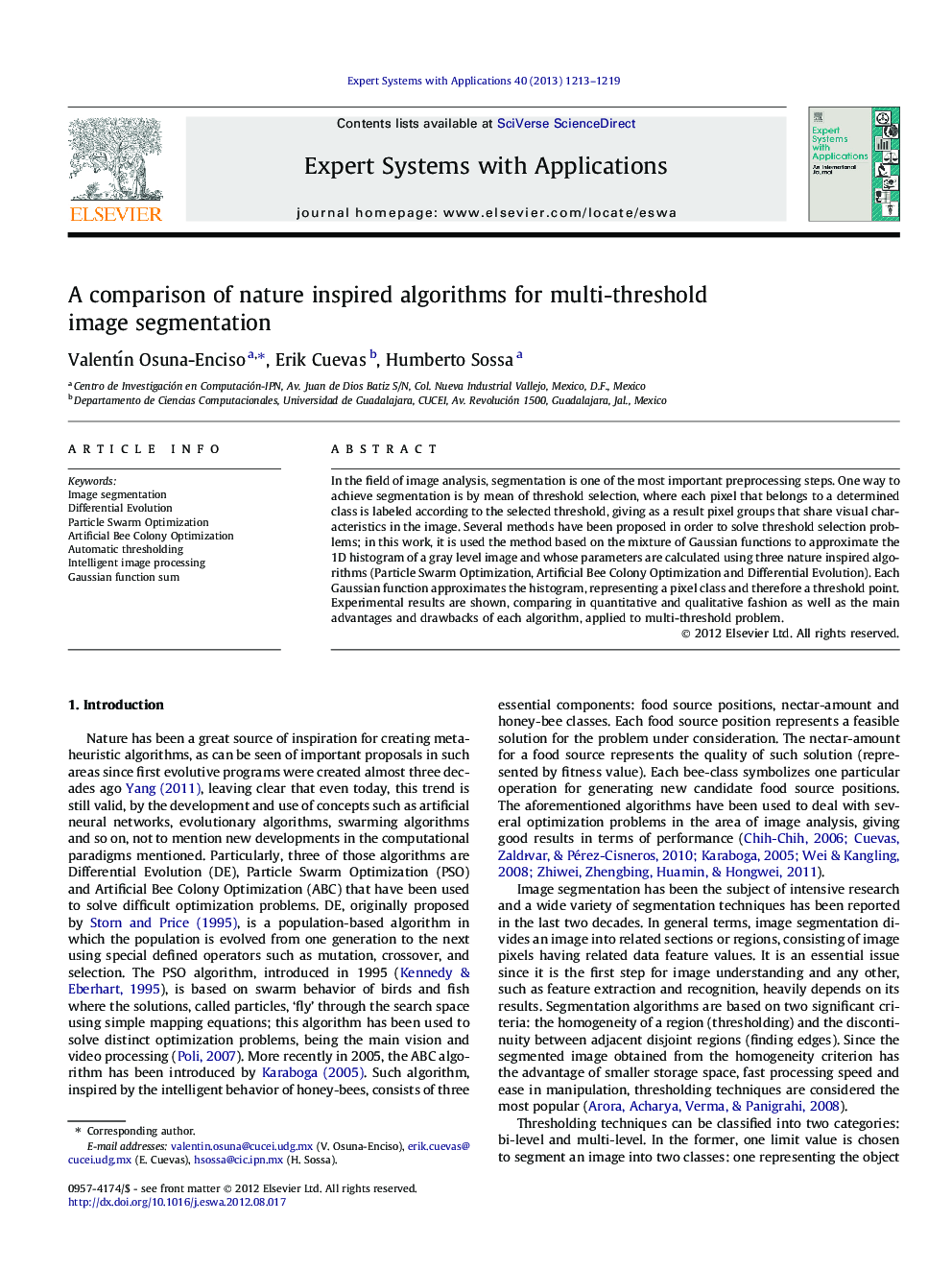| Article ID | Journal | Published Year | Pages | File Type |
|---|---|---|---|---|
| 383026 | Expert Systems with Applications | 2013 | 7 Pages |
In the field of image analysis, segmentation is one of the most important preprocessing steps. One way to achieve segmentation is by mean of threshold selection, where each pixel that belongs to a determined class is labeled according to the selected threshold, giving as a result pixel groups that share visual characteristics in the image. Several methods have been proposed in order to solve threshold selection problems; in this work, it is used the method based on the mixture of Gaussian functions to approximate the 1D histogram of a gray level image and whose parameters are calculated using three nature inspired algorithms (Particle Swarm Optimization, Artificial Bee Colony Optimization and Differential Evolution). Each Gaussian function approximates the histogram, representing a pixel class and therefore a threshold point. Experimental results are shown, comparing in quantitative and qualitative fashion as well as the main advantages and drawbacks of each algorithm, applied to multi-threshold problem.
► We present an empirical comparison of three state of the art meta-heuristics. ► Were used blood images to perform thresholding by a mixture of Gaussian functions. ► Compared algorithms were ABC, DE, PSO and Otsu used to perform multithreshold. ► Comparisons were made according to function evaluation and a quality measure. ► DE shows superior performance in convergence and in quality terms similar to ABC.
